
Maximilian street (Maximilianstraße) is one of the main streets of Munich and one of the most expensive streets in Germany.
The Maximilianstrasse is also known as the Maximilian street or the Maximilian street and is one of the Royal avenues of the city.
The construction of the Avenue started with design architect Georg Friedrich Christian Burklein in the early 1850-ies by decree of the Bavarian king Maximilian II, after whom the street got its name.
Maximilianstrasse architectural style combines elements of various styles and eras such as Gothic and Renaissance.
Since 1970-ies some Maximilianstrasse and the surrounding streets have earned a reputation as a refined and exclusive shopping district.
Today maximilianstraße is one of the most expensive streets in Germany with the highest retail rents.
Stretches maximilianstraße in the direction from the West (in the Old town of Munich) in the South-East by the river ISAR, and connects to a square of Max Joseph (Max-Joseph-Platz) with the historic building of the Maximilianeum.
The length of the street, together with the Maximilian bridge, is about 1 kilometer.
Along the street there are: 5-star hotel Vier Jahreszeiten Kempinski München, Munich chamber theatre "Kammerspiele", the government building of Upper Bavaria and the Museum five continents and the building, known for its galleries, which houses outlets of world brands, designer shops, jewelry stores, boutiques and salons.
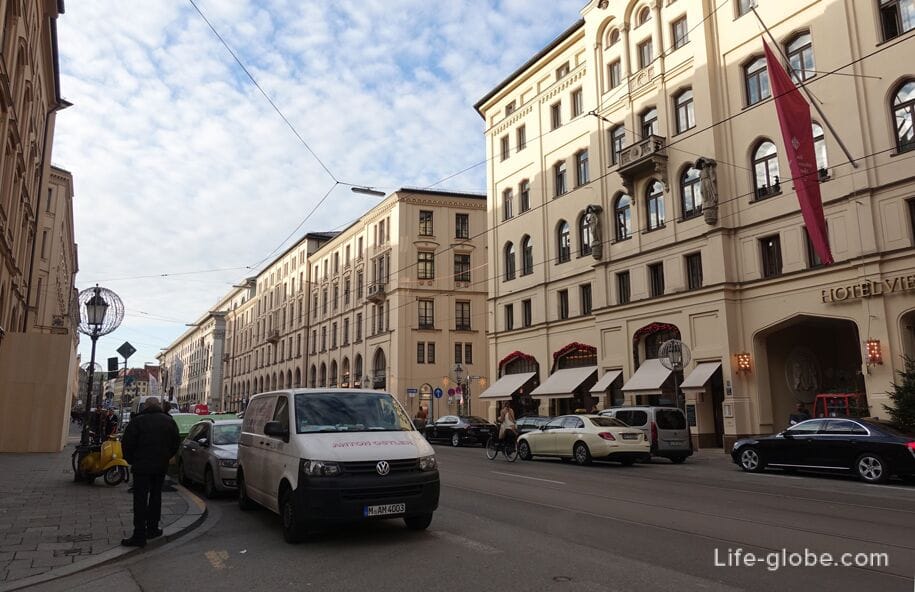
The Maximilianstrasse (No. 2 and 2A) leaves the North facade of the former Palace of Turing-Jettenbach (Palais Toerring-Jettenbach), built in the 18th century in the Rococo style.
In those days the mansion with courtyards was the most sophisticated aristocratic Palace of Munich.
The North facade of the building, which was renovated by the architect Leo von Klenze columned portico, is the main decoration of the Palace. Murals tamer of horses in the portico was made by Johann Georg Hiltensperger.
In the 2000s, the building was converted to commercial and residential center with shops, restaurants, offices, residential apartments on the upper floors and underground Parking. Read more about the Palace of Turing-Jettenbach...
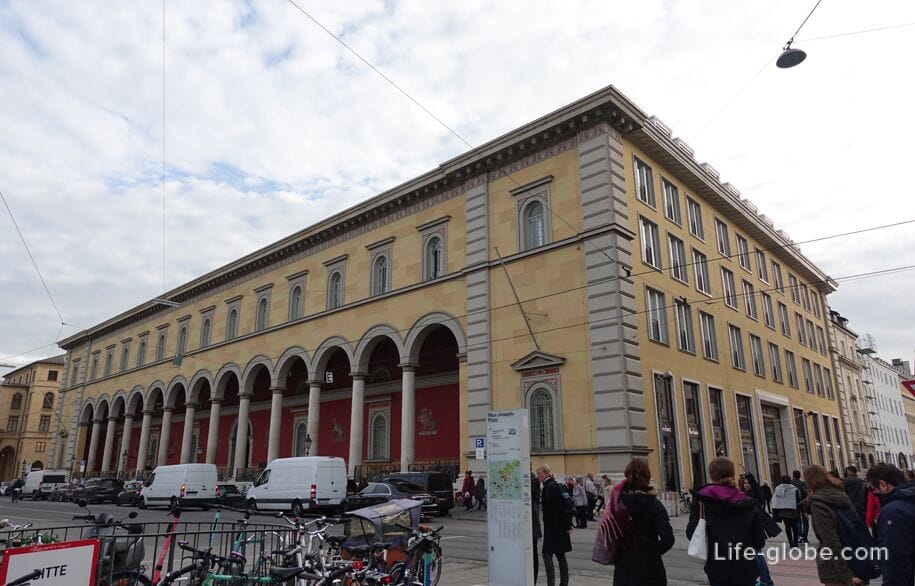
Opposite the Palace Tering-Jettenbach side Maximilianstrasse architectural bright spot highlighted the building of the National theatre (Nationaltheater).
On the Maximilianstrasse goes South (side) facade of the theater, while its main (Western) facade is decorated with square of max Joseph.
The Opera house - the Opera house, the main appearance which form a wide staircase, a portico with eight Corinthian columns and a triangular pediment duplex with statues and paintings, which together resemble a Greek temple. Read more about National theatre Munich...
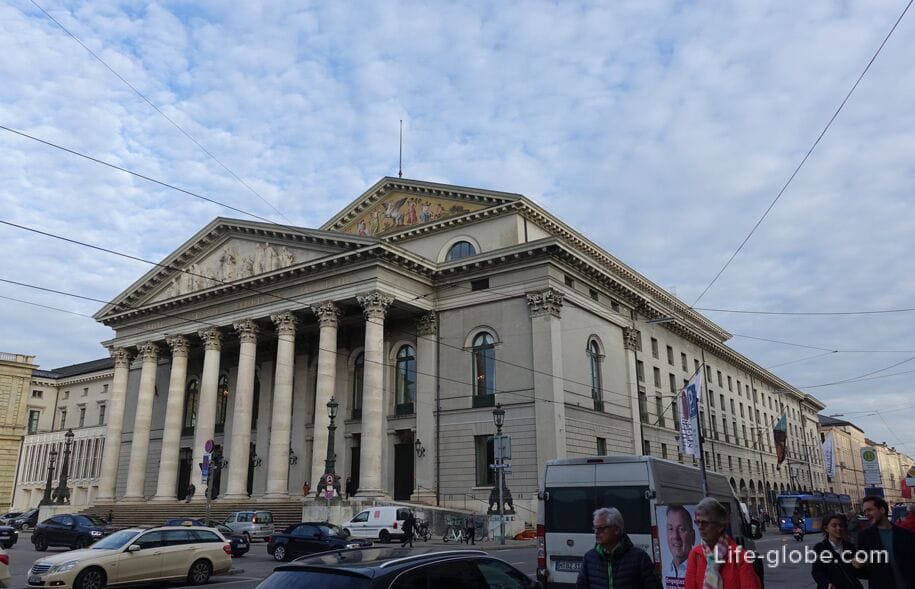
Address: maximilianstraße 6 and 8 is the North facade of the outbuildings of the former chief of the mint of Munich.
The facade of the mint acquired its neo-Gothic decoration in the period when the Maximilianstrasse was built in accordance with the concept of Royal Avenue. Today in the North arcade of the building are located commercial premises.
The former mint was originally built in 1563 as part of the Imperial residence (now the Old Palace), which housed the Ducal stables and the art collections of albert V, Duke of Bavaria.
Later the building was converted into the main mint.
Photo of the North facade of the building
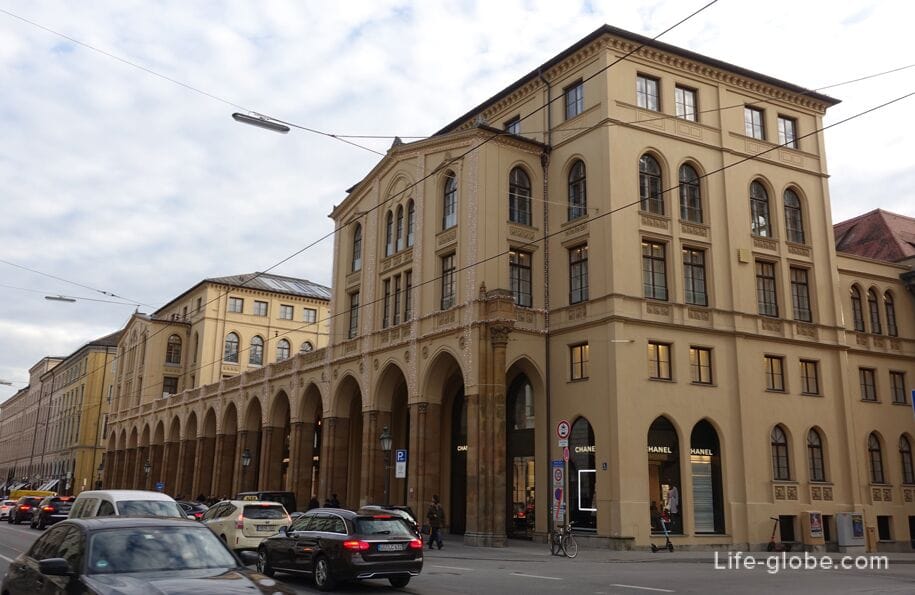
Address: Maximilianstrasse 17 is one of the best and prestigious hotels Munich 5-star Vier Jahreszeiten Kempinski München.
This historic hotel was built by Rudolf Gottgetreu in 1856-1858 years and inaugurated in 1858.
In hotel: restaurant, bar, free Wi-Fi and a Spa centre with pools, gym and sauna. Panoramic view of the city.
In rooms: air conditioning, TV and Minibar. Bathrooms include bathrobes, Slippers and free toiletries. Delivered daily to the room a complimentary bottle of water.
Room rates may include Breakfast. Link to the hotel
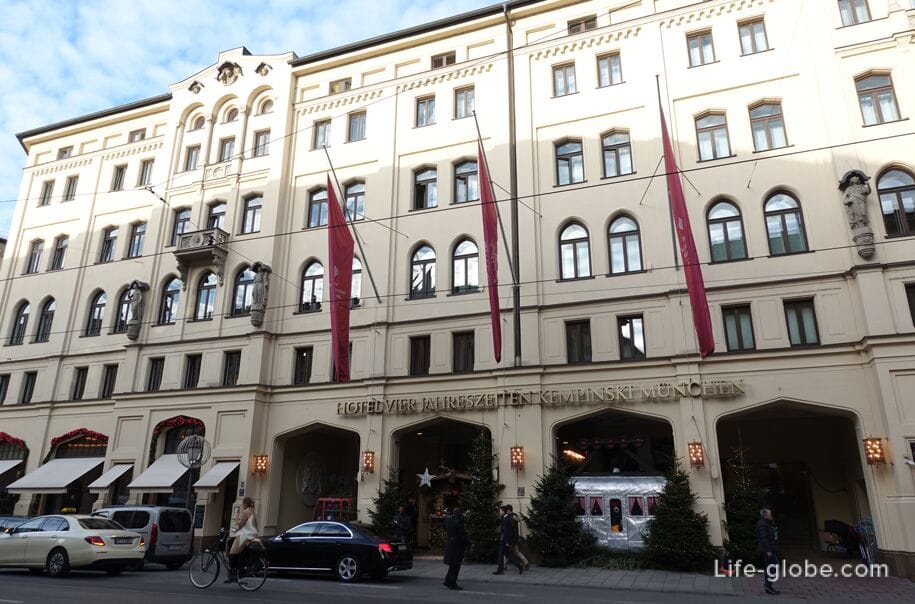
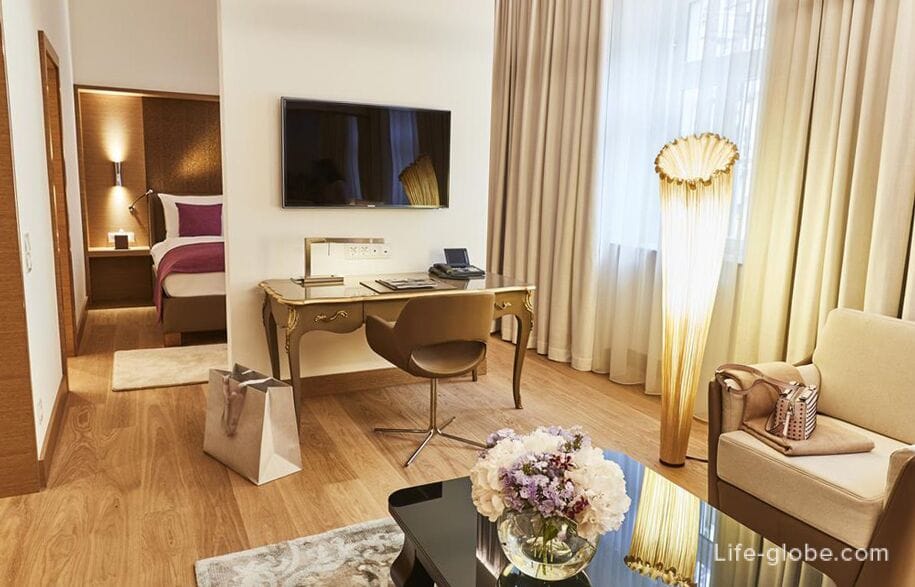
Munich kammerspiele "Kammerspiele" (Münchner Kammerspiele) is located at the address: Maximilianstraße, 26-28.
The theater building in modern style was built in the years 1900-1901.
The main stage theatre has 690 seats. Read more about chamber theatre of Munich...

The majestic building of the government of Upper Bavaria (Regierung von Oberbayern Gebäude) is located at the address: Maximilianstrasse, 39 and is the absolute leader among architectural all buildings on Maximilianstrasse.
The building was built in 1856-1864 years in the Gothic revival, the so-called maximiliansau style maximilianstraße street.
The customer of building was made by the king Maximilian II, who wanted to obtain committed Executive building for the then Royal government of Upper Bavaria.
During the Second world war the building was largely destroyed. Then rebuilt with deviations from the original plan.
The main facade is decorated with statues, towers, archways and Windows. Three bronze statues on the roof represent, from West to East: fides (loyalty), Justice (justice) and Sapientia (wisdom). On the towers of the building there are heraldic shields. Read more about the building of the government of Upper Bavaria...
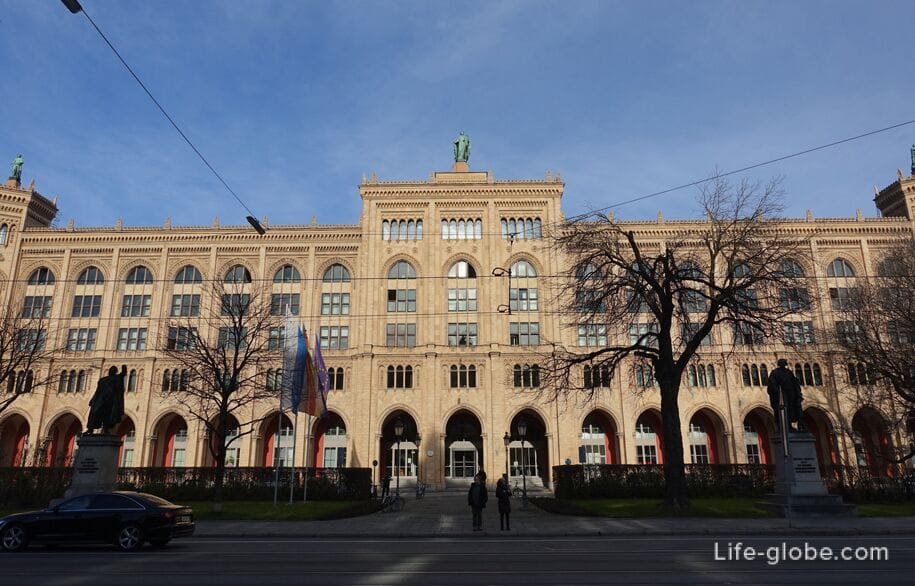
The five continents Museum (Museum Fünf Kontinente) is located opposite the government building of Upper Bavaria at the address: Maximilianstrasse, 42 and is a Museum for non-European artworks and objects of cultural interest in Munich.
The Museum was founded in 1862 and was the first ethnological Museum in Germany.
Exhibitions of the Museum give an overview of the various non-European cultures. There are permanent exhibitions on Africa, South America, North America, Oceania and East.
The Museum building was built from 1859 to 1865 as the Bavarian national Museum. The customer was king Maximilian II. Read more about the Museum five continents...


In the middle of the street between the carriageway sections of the road, on the so-called transport the island is a monument to king Maximilian II (Maximilian II König Denkmal).
The monument also known as the monument to max II. Was designed in 1865 by the German sculptor Kaspar von Combused.
Bronze sculpture of Maximilian II mounted on a high granite pedestal. The gaze of the sculpture of the ruler is oriented to the East - in the direction of the building, the Maximilianeum.
On the pedestal under the statue of the king, there are four figures of children with the national coat of arms of Swabia, Old Bavaria, Palatinate and Franconia. At their feet sculptures of two women and two men who symbolize such qualities as wisdom and justice and love of peace and strength.
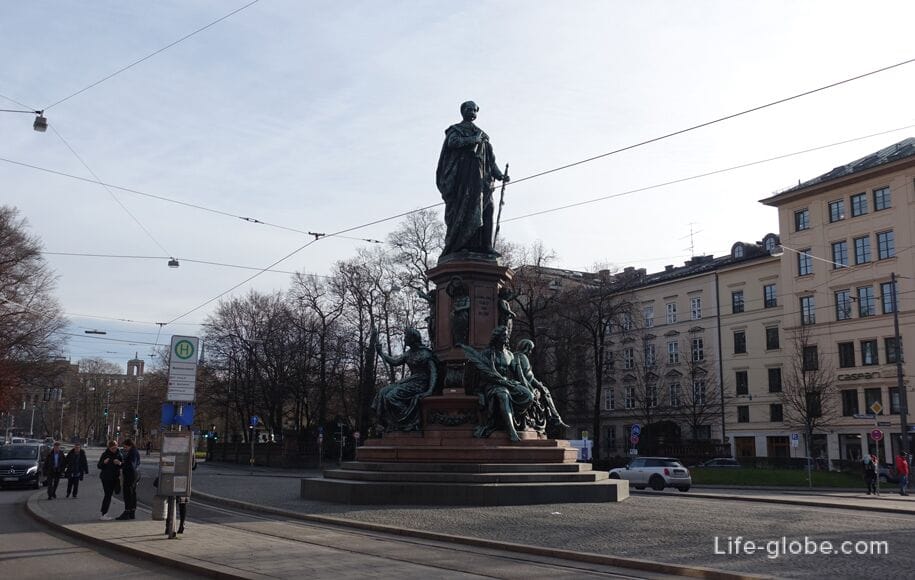
In the corner building at the address: Maximilianstrasse 47 is Variety-theatre the GOP (GOP Variete-Theater).
The auditorium does not consist of rows of seats, and is a space with tables, for which, during shows and performances on stage serves food and drinks.
The website of the theatre: variete.de/muenchen.
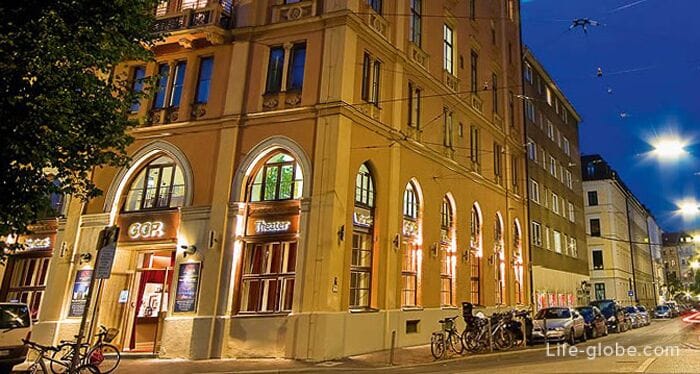
At the corner formed by the Maximilianstrasse and the street Torstrasse, 46 (Thierschstraße) is a building of the school of Wilhelm (Wilhelmsgymnasium / Wilhelmsgymnasium) is the oldest high school in Upper Bavaria.
After testing the level of 2005 by the Ministry of culture of Bavaria, the high school was recognized as one of the best from the point of view of the success of the learning environment and achievement in Bavaria.
The building was built between 1875 and 1877 years by the architect Carl von Leimbach.
In the design and construction of the building, the architect considered the use of architectural styles used at that time, wrong in order to emphasize the humanistic idea of the Bavarian education, so he decided not to use the so-called maximiliansau style. This break with the architectural concept of Maximilianstrasse is made possible because king Ludwig II, who ruled at the time, had several different interests and preferences than his father, king Maximilian II.
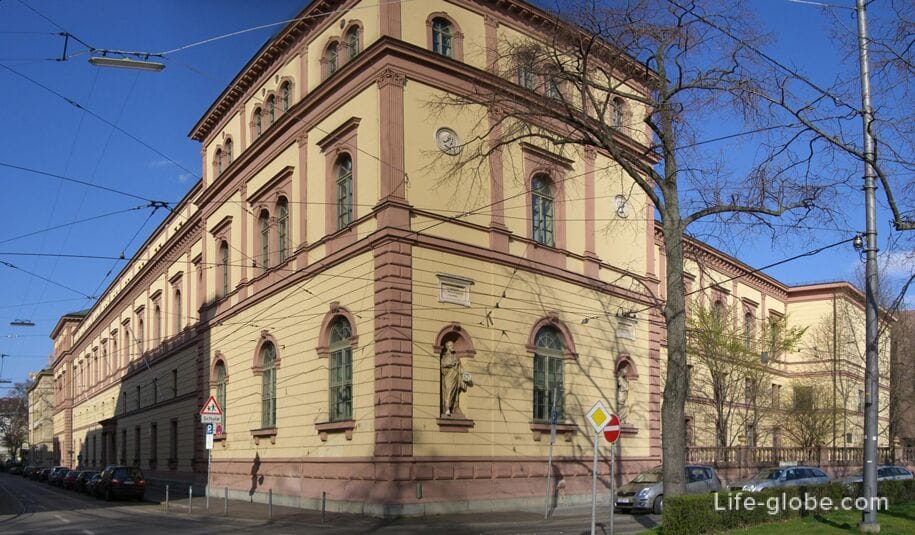
The Maximilian bridge or Maximilianshutte (Maximiliansbrücke) is an integral continuation of the Maximilianstrasse and leads over the river ISAR to the Maximilianeum building.
The bridge was designed by the town planning officer Arnold of Zenetti and is made from 1857 to 1863 years.
Subsequently, from 1903 to 1905 was spent on expansion and modernization of the bridge.
On the bridge are: road and two paths, one on each side of the bridge. Read more about the Maximilian bridge...
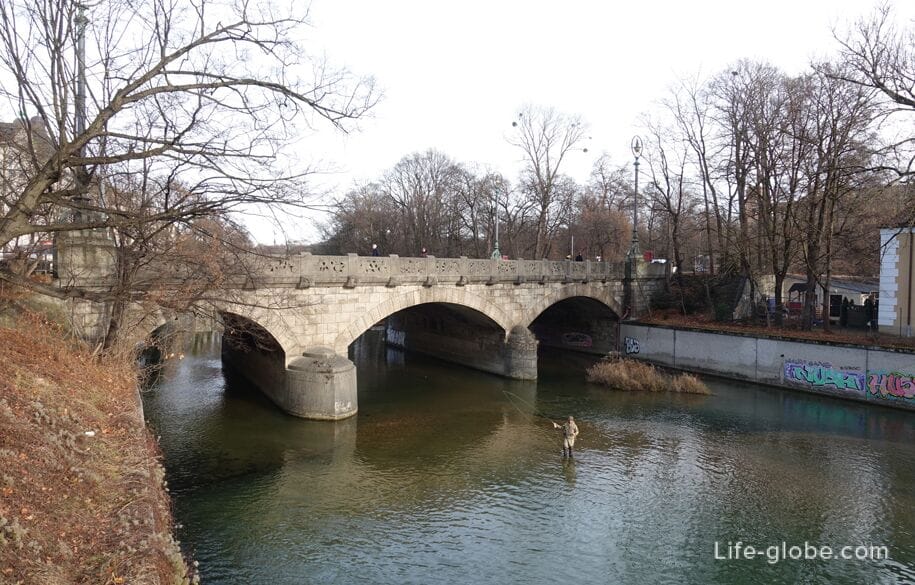

The Maximilian bridge leads to the luxurious historical building, the Maximilianeum (Maximilianeum), which is the final Eastern point of the Maximilianstrasse.
The construction of the Maximilianeum was launched by order of king Maximilian II in 1857 with the aim of supporting gifted students and placement of fellows. Construction was completed in 1874 with some modifications from the original plan.
Since 1949, the walls of the Maximilianeum also housed the Bavarian Landtag (Bavarian state Parliament).
The building has features of Gothic and Renaissance. The facade is decorated with sculptures and statues, perfectly matching arches, high arched Windows, recessed in niches, columns, mosaics and niches with busts and also lainnya jewelry.
To the main entrance of the building, facing the Maximilian bridge, has a wide monumental stairway. The stairs offer views of the bridge, Maximilianstrasse and some of the surrounding area. Read more about Maximiliano...
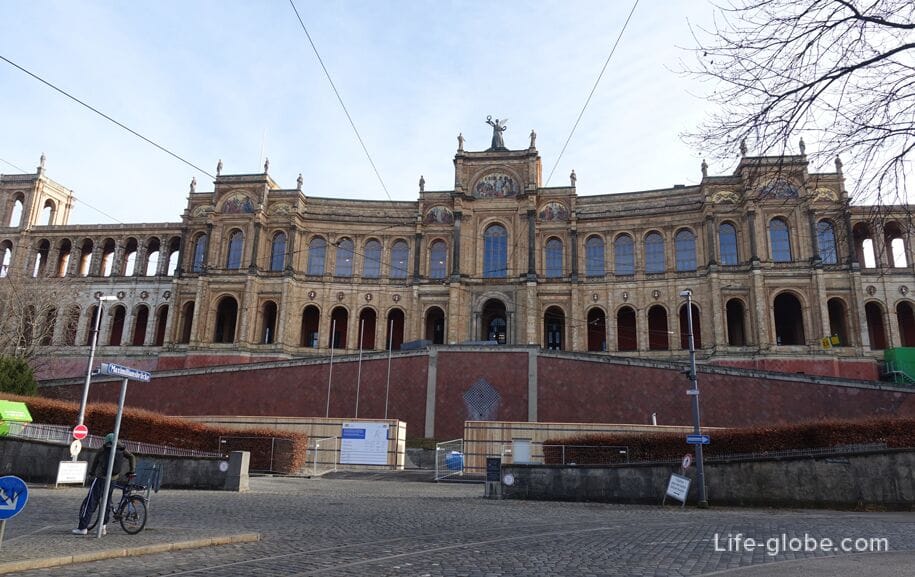
In addition to the 5-star Kempinski hotel, located directly on Maximilianstrasse, close to the street you can stay at:
- hotel an der Oper features a restaurant, bar, free Wi-Fi, rooms and apartments.
The Soundproofed rooms and apartmentswith flat screen TV, mini-bar, safe and Hairdryer. Facilities and free toiletries. Link to the hotel

- 4-star hotel Platzl Hotel Superior with free Spa, a restaurant, a pub with a beer garden and free Wi-Fi.
The Soundproofed rooms feature wooden furniture and include a flat-screen TV, Windows from floor to ceiling Windows and laptop safes. The bathrooms include bathrobes and Slippers. Each room offers a complimentary bottle of water.
Room rates may include Breakfast. Link to the hotel
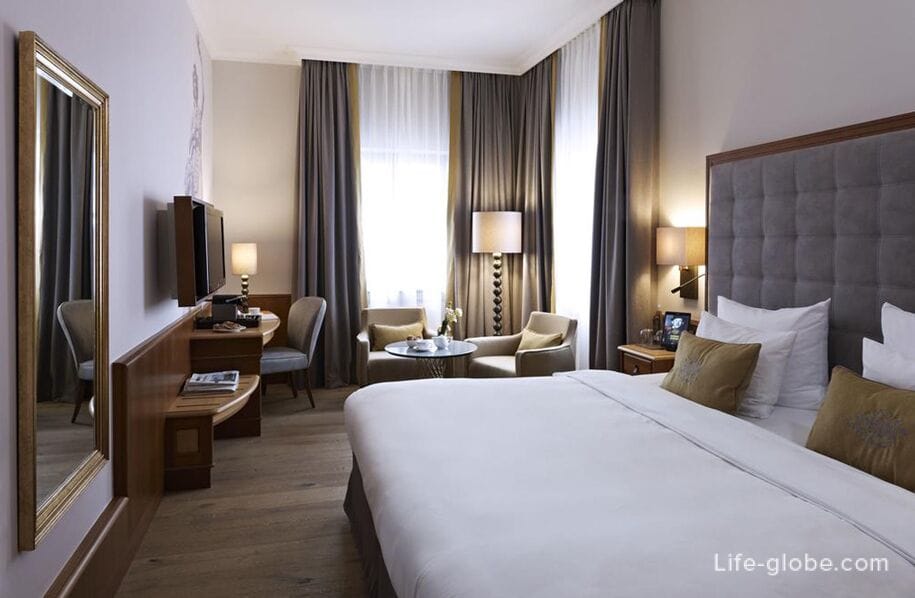
- hotel Falkenturm with free Wi-Fi, free Parking and family rooms.
At the reception free iPad.
In rooms: flat screen TV, a work Desk and a private bathroom.
Room rates may include Breakfast. Link to the hotel
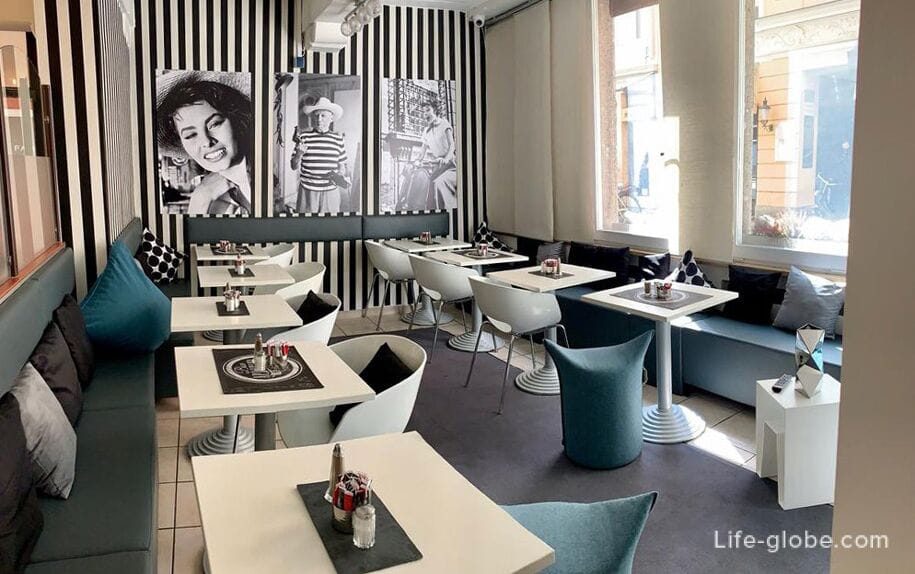
- Maximilian hotel Munich courtyard with rose garden, lounge, restaurant, bar, free Wi-Fi, private Parking and a modern Spa area with a fitness room, a Finnish sauna, steam bath and Kneipp bath for feet.
The rooms and suites: equipped kitchenette, air conditioning, flat-screen TV and a DVD player.
Room rates may include Breakfast. Link to the hotel

- 4-star Opera hotel with inner courtyard, terrace, bar, reception, free Parking and rooms with free Wi-Fi.
The rooms are furnished in classic style and decorated with Antiques. The bathroom includes bathrobes, Slippers and toiletries. Some rooms have a balcony overlooking the courtyard.
Room rates include Breakfast. Link to the hotel
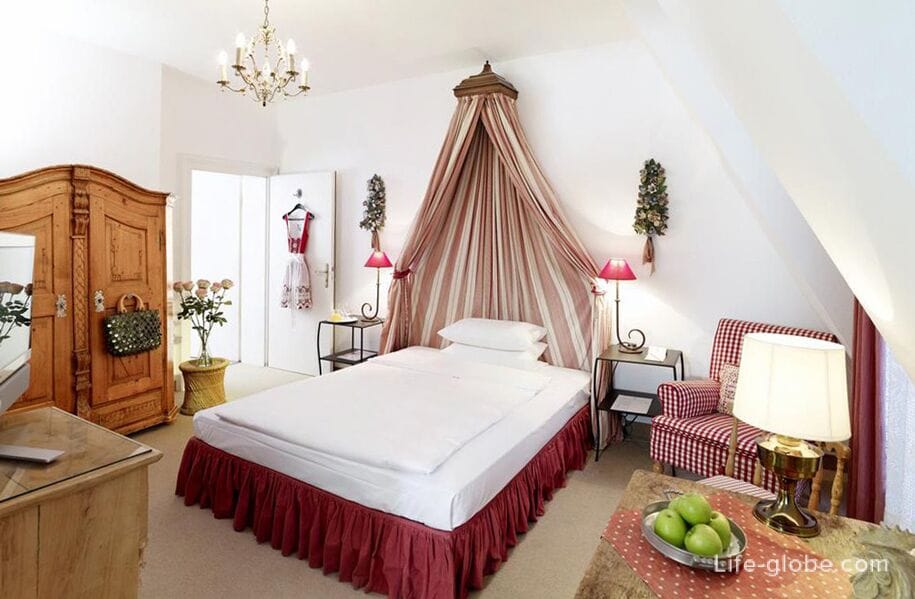
- the hotel Splendid-Dollmann islocated in a 19th-century townhouse.
In the hotel: terrace, bar, food and drinks in the room, free Wi-F and Parking.
The rooms are decorated in a classic style. The rooms have a TV and a private bathroom. Link to the hotel
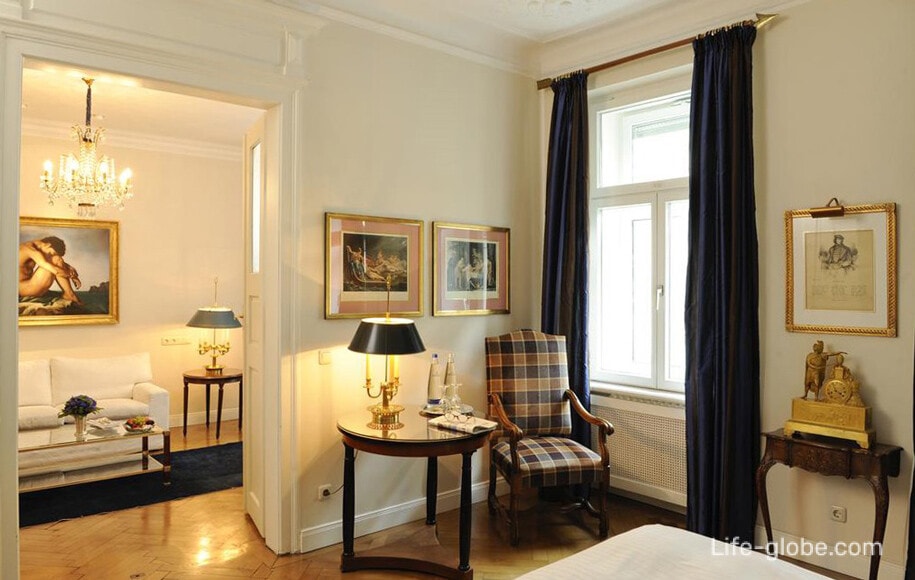
All accommodation in Munich, including near Maximilianstrasse in the historic center of the city, you can view and book here